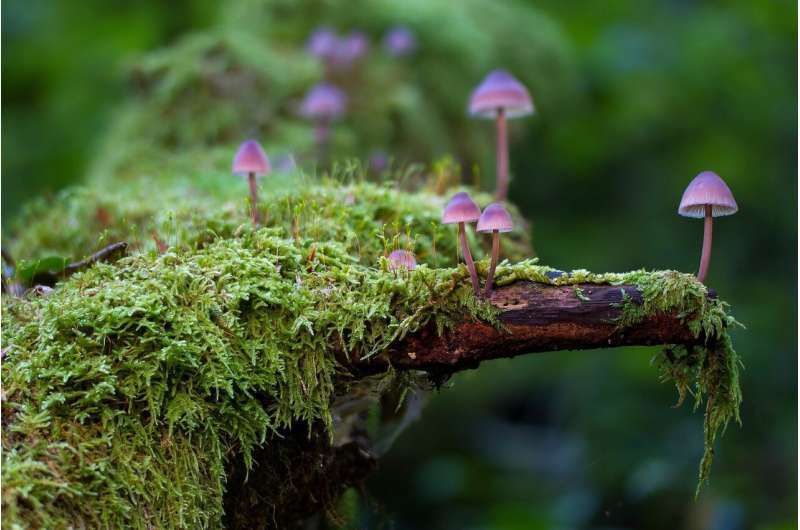Credit: CC0 Public Domain
For a plant to thrive, it needs the help of a friendly fungus—preferably one that will dig its way deep into the cells of the plant's roots.
Plants live in symbiosis with root-associated, or mycorrhizal, fungi. The fungi provide up to 80 percent of the nutrients and water a plant needs to grow, and the plants produce up to 30 percent of the photosynthate—a food substance made through photosynthesis—that the fungi need.
There are two main types of mycorrhizal fungi—arbuscular and ectomycorrhizal. An arbuscular mycorrhiza penetrates the cortical cells of the roots of a plant. Ectomycorrhizal fungi do not penetrate the plant's cell walls, instead forming a netlike structure around the plant root.
A new paper published in the Proceedings of the National Academy of Sciences and co-authored by ecologist Stephanie Kivlin, an assistant professor at the University of Tennessee, Knoxville, shows that arbuscular mycorrhizal fungi are especially helpful to the plants they colonize.
"Mycorrhizal fungal associations below the ground are one of the largest influences on plant tissue nutrient concentrations," said Kivlin. "To optimize plant nutrition, we need to incorporate mycorrhizal associations into our agricultural and management frameworks."
Arbuscular mycorrhizal fungi increase plant nutrient concentrations in plant leaves, litter, and roots more than ectomycorrhizal fungi. The type of root-associated fungi present has more influence on a plant's nutrient levels than plant leaf traits or plant associations with nitrogen-fixing bacteria.
Kivlin's co-authors are Colin Averill from ETH Zürich, Jennifer M. Bhatnagar and Michael C. Dietze from Boston University, and William D. Pearse from Utah State University.
The study analyzed more than 17,000 trait observations from nearly 3,000 woody plant species in six categories that demonstrate how readily the plant uses nutrients: the nitrogen and phosphorous concentrations in green leaves, senescent leaves—leaves that are about to fall off or have recently fallen off—and roots. It looks at how mycorrhizal effects vary across environments, doing similar analyses in boreal, temperate, and tropical latitudinal zones.
The Kivlin Lab studies the effects of global change on the distributions, function, and ecosystem consequences of plant mycorrhizal fungal associations worldwide.
"The next steps are to understand if there is variation in nutrient acquisition among fungal species within each mycorrhizal group and how soil nutrient concentrations may interact to influence plant nutrient concentrations with global change," Kivlin said.
More information: Colin Averill el al., "Global imprint of mycorrhizal fungi on whole-plant nutrient economics," PNAS (2019). www.pnas.org/cgi/doi/10.1073/pnas.1906655116
Journal information: Proceedings of the National Academy of Sciences
Provided by University of Tennessee at Knoxville























